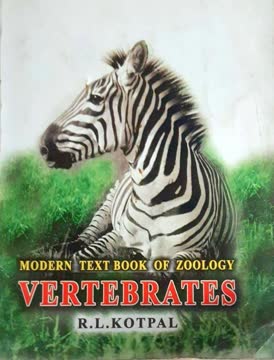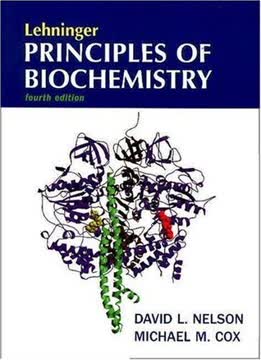Key Takeaways
1. Cells: The Fundamental Units of Life, Diverse Yet Unified
Even simple unicellular organisms exhibit all the hallmark properties of life, indicating that the cell is the fundamental unit of life.
Life's Building Blocks. Cells are the basic units of life, capable of growth, reproduction, information processing, and response to stimuli. Whether organized into complex multicellular organisms or existing as single entities, cells exhibit the fundamental properties that define life. The human body, for instance, is composed of trillions of cells, each with specialized functions.
Diversity in Unity. Despite their incredible variety in size, shape, and function, all cells share certain structural features and carry out many complicated processes in basically the same way. This commonality points to a shared evolutionary history and underscores the fundamental nature of the cell as the unit of life. This book explores the molecular basis of both the differences and similarities in the structure and function of various cells.
Molecular Cell Biology. Molecular cell biology is a rich, integrative science that brings together biochemistry, biophysics, molecular biology, microscopy, genetics, physiology, computer science, and developmental biology. Each of these fields has its own emphasis and style of experimentation. The study of cells at the molecular level provides insights into the intricate mechanisms that govern cellular processes and allows us to understand how cells function in health and disease.
2. Prokaryotic vs. Eukaryotic: A Tale of Two Cell Types
The biological universe consists of two types of cells—prokaryotic and eukaryotic.
Two Domains of Life. The biological world is divided into two fundamental cell types: prokaryotic and eukaryotic. Prokaryotic cells, like bacteria, are simple, lacking a defined nucleus and complex internal organization. Eukaryotic cells, found in plants, animals, fungi, and protists, are more complex, with a membrane-bound nucleus and various organelles.
Simplicity vs. Complexity. Prokaryotic cells, such as Escherichia coli, consist of a single compartment surrounded by a plasma membrane and often a cell wall. Eukaryotic cells, like human fibroblasts, contain a nucleus and other membrane-bound organelles, such as mitochondria, lysosomes, and the endoplasmic reticulum. These organelles create specialized microenvironments within the cell.
Archaea: A Third Lineage. Detailed analysis of DNA sequences has revealed two distinct types of prokaryotic organisms: eubacteria and archaea. Archaea share some similarities with eukaryotes, such as homologous histone proteins, suggesting a closer evolutionary relationship. Many archaeans thrive in extreme environments, such as high salt concentrations or hot, acidic sulfur springs.
3. Molecules of Life: From Small Building Blocks to Macromolecules
Cells produce three types of large polymers, commonly called macromolecules: polysaccharides, proteins, and nucleic acids.
The Molecular Soup. Cells are filled with a watery solution containing small molecules, ions, and macromolecules. These components interact in a highly coordinated manner to carry out the functions of life. The locations and concentrations of small molecules and ions within the cell are controlled by numerous proteins inserted in cellular membranes.
Building Blocks. Small molecules, or monomers, can be joined to form large polymers, or macromolecules. The three major types of macromolecules are polysaccharides (formed from sugars), proteins (formed from amino acids), and nucleic acids (formed from nucleotides). These macromolecules are critical structural components of plant cell walls and insect skeletons.
Information Carriers. Proteins and nucleic acids exhibit greater informational complexity than polysaccharides. Proteins are formed from 20 different amino acids, while nucleic acids (DNA and RNA) are formed from four different nucleotides. The specific sequence of these monomers determines the unique three-dimensional structure and function of each protein and nucleic acid.
4. Cellular Work: Building, Degrading, and Moving
Much cellular work is performed by molecular machines, some housed in the cytosol and some in various organelles.
The Cell as a Factory. Cells are dynamic factories that constantly build and degrade molecules and structures. This work is powered by chemical energy, primarily from sugars, fats, or sunlight, and stored in ATP. Molecular machines, composed of proteins, carry out many cellular tasks.
Building and Degrading. Cells produce complex molecules from simple building blocks, such as sugars, amino acids, and nucleotides. They also break down worn-out or obsolete parts into small molecules that can be discarded or recycled. Lysosomes, containing degradative enzymes, and peroxisomes, specialized for breaking down lipids and toxins, assist in this cleanup work.
Movement and Shape. Cells change shape and move using their internal skeletons, or cytoskeleton. The cytoskeleton is composed of three types of protein filaments: intermediate filaments, microtubules, and microfilaments. These filaments form networks and bundles that provide structural support, facilitate cell locomotion, and transport vesicles and macromolecules within the cell.
5. Cellular Communication: Sensing, Signaling, and Responding
A living cell continuously monitors its surroundings and adjusts its own activities and composition accordingly.
Constant Monitoring. Cells continuously monitor their surroundings and adjust their activities and composition accordingly. They also communicate by sending signals that can be received and interpreted by other cells. These signals can include small chemicals, gases, proteins, light, and mechanical movements.
Receptors and Pathways. Cells possess numerous receptor proteins for detecting signals and elaborate pathways for transmitting them within the cell to evoke a response. These responses can involve changes in the location or activity of preexisting proteins or alterations in the amount or types of proteins they contain.
Gene Expression. Cells often respond to signals by altering the amount or types of proteins they contain through gene expression. This process is commonly controlled at the level of transcription, the first step in the production of proteins. Such control of gene activity depends on DNA-binding proteins called transcription factors, which bind to DNA and act as switches, either activating or repressing transcription of particular genes.
6. Genetics: Unlocking the Secrets of Heredity and Mutation
Mutated genes that encode altered proteins or that cannot be controlled properly cause numerous inherited diseases.
The Blueprint of Life. The genetic material, DNA, carries the coded information for making proteins. This information is divided into discrete functional units called genes, which typically are 5,000 to 100,000 nucleotides long. Most bacteria have a few thousand genes; humans, about 40,000.
Mistakes Happen. Mistakes occasionally occur spontaneously during DNA replication, causing changes in the sequence of nucleotides. Such changes, or mutations, also can arise from radiation or from chemical poisons. Mutations can be inherited only if they are present in cells that potentially contribute to the formation of offspring.
Consequences of Mutation. Mutated genes that encode altered proteins or that cannot be controlled properly cause numerous inherited diseases. For example, sickle cell disease is attributable to a single nucleotide substitution in the hemoglobin gene. Recent advances in detecting disease-causing mutations and in understanding how they affect cell functions offer exciting possibilities for reducing their often devastating effects.
7. Genomics: A Bird's-Eye View of the Entire Genome
Comprehensive studies of genes and proteins from many organisms are giving us an extraordinary documentation of the history of life.
The Big Picture. While biochemistry and genetics generally focus on one gene and its encoded protein at a time, genomics provides a comprehensive view of the structure and activity of an organism’s genome, its entire set of genes. The recent completion of the genome sequences for more than 80 species of bacteria and several eukaryotes now permits comparisons of entire genomes from different species.
Molecular Unity. The results provide overwhelming evidence of the molecular unity of life and the evolutionary processes that made us what we are. Genomics-based methods for comparing thousands of pieces of DNA from different individuals all at the same time are proving useful in tracing the history and migrations of plants and animals and in following the inheritance of diseases in human families.
DNA Microarrays. New methods using DNA microarrays can simultaneously detect all the mRNAs present in a cell, thereby indicating which genes are being transcribed. Such global patterns of gene expression clearly show that liver cells transcribe a quite different set of genes than do white blood cells or skin cells.
8. Investigating Cells: A Multi-Disciplinary Approach
To build an integrated understanding of how the various molecular components that underlie cellular functions work together in a living cell, we must draw on various perspectives.
A Holistic View. To understand how cells function, we must draw on various perspectives from different disciplines, including cell biology, biochemistry, genetics, genomics, and developmental biology. Each field probes the cell’s inner workings in different ways, allowing us to ask different types of questions about cells and what they do.
Cell Biology. Cell biology reveals the size, shape, and location of cell components through microscopy. Light microscopy, with specific staining or fluorescent labeling, allows visualization of chromosomes and proteins. Electron microscopy provides higher resolution, revealing fine structural details of organelles and membranes.
Biochemistry and Genetics. Biochemistry reveals the molecular structure and chemistry of purified cell constituents through fractionation and x-ray crystallography. Genetics reveals the consequences of damaged genes by isolating and analyzing mutants with altered phenotypes. Genomics provides a comprehensive view of the structure and expression of entire genomes using DNA microarrays.
9. Water: The Matrix of Life and Molecular Interactions
Constituting 70–80 percent by weight of most cells, water is the most abundant molecule in biological systems.
The Universal Solvent. Life first arose in a watery environment, and the properties of this ubiquitous substance have a profound influence on the chemistry of life. Water is the most abundant molecule in biological systems, constituting 70–80 percent by weight of most cells.
Hydrophilic vs. Hydrophobic. Many biomolecules, such as sugars, readily dissolve in water and are described as hydrophilic. Other biomolecules, such as fats, shun water and are said to be hydrophobic. Still other biomolecules, referred to as amphipathic, contain both hydrophilic and hydrophobic regions.
Phospholipid Bilayers. The plasma membrane and other cellular membranes are composed primarily of two layers of phospholipid molecules. These bipartite molecules have a “water-loving” (hydrophilic) end and a “water-hating” (hydrophobic) end. The two phospholipid layers of a membrane are oriented with all the hydrophilic ends directed toward the inner and outer surfaces and the hydrophobic ends buried within the interior.
10. Covalent Bonds and Noncovalent Interactions: The Glue of Life
As the story of cells unfolds throughout this book, we will focus on the molecular basis of both the differences and similarities in the structure and function of various cells.
Strong and Weak Forces. Strong and weak attractive forces between atoms are the glue that holds them together in individual molecules and permits interactions between different biological molecules. Strong forces form a covalent bond when two atoms share one pair of electrons or multiple pairs of electrons.
Noncovalent Interactions. The weak attractive forces of noncovalent interactions are equally important in determining the properties and functions of biomolecules. There are four major types of noncovalent interactions: ionic interactions, hydrogen bonds, van der Waals interactions, and the hydrophobic effect.
Molecular Complementarity. Molecular complementarity is the lock-and-key fit between molecules whose shapes, charges, and other physical properties are complementary. Multiple noncovalent interactions can form between complementary molecules, causing them to bind tightly. The high degree of binding specificity that results from molecular complementarity is one of the features that distinguish biochemistry from typical solution chemistry.
11. ATP: The Universal Energy Currency of the Cell
In many cases, the source of energy for chemical reactions in cells is the hydrolysis of the molecule ATP.
Energy Storage. One of the best-known small molecules is adenosine triphosphate (ATP), which stores readily available chemical energy in two of its chemical bonds. When cells split apart these energy-rich bonds in ATP, the released energy can be harnessed to power an energy-requiring process like muscle contraction or protein biosynthesis.
Energy Acquisition. To obtain energy for making ATP, cells break down food molecules. For instance, when sugar is degraded to carbon dioxide and water, the energy stored in the original chemical bonds is released and much of it can be “captured” in ATP. Bacterial, plant, and animal cells can all make ATP by this process.
Photosynthesis. In addition, plants and a few other organisms can harvest energy from sunlight to form ATP in photosynthesis. This energy is released when a high-energy phosphoanhydride bond linking the α and β or the β and γ phosphates in the ATP molecule is broken by the addition of a water molecule. Proteins can efficiently transfer the energy of ATP hydrolysis to other chemicals, thus fueling other chemical reactions, or to other biomolecules for physical work.
12. Chemical Equilibrium: Balancing Reactions in the Cell
Chemical reactions are reversible, and the distribution of the chemicals between starting compounds and the products of the reactions depends on the rate constants of the forward and reverse reactions.
Reversible Reactions. Chemical reactions are reversible, and the distribution of the chemicals between starting compounds and the products of the reactions depends on the rate constants of the forward and reverse reactions. The ratio of these K eq, provides an informative measure of the relative amounts of products and reactants that will be present at equilibrium.
Equilibrium Constants. The equilibrium constant K eq depends on the nature of the reactants and products, the temperature, and the pressure. Under standard physical conditions, the K eq is always the same for a given reaction, whether or not a catalyst is present.
Steady State. Within cells, many reactions are linked in pathways in which a product of one reaction serves as a reactant in another or is pumped out of the cell. In this more complex situation, when the rate of formation of a substance is equal to the rate of its consumption, the concentration of the substance remains constant, and the system of linked reactions for producing and consuming that substance is said to be in a steady state.
Last updated:
FAQ
What is "Molecular Cell Biology" by Harvey F. Lodish about?
- Comprehensive cell biology overview: The book provides an in-depth exploration of the molecular mechanisms underlying cell structure, function, and regulation in both prokaryotic and eukaryotic cells.
- Integration of disciplines: It weaves together biochemistry, genetics, molecular biology, and microscopy to explain how cells grow, divide, communicate, and respond to their environment.
- Focus on experimental methods: The text emphasizes the experimental approaches and model organisms that have shaped our understanding of molecular cell biology.
- Relevance to health and disease: It connects fundamental cellular processes to development, differentiation, and diseases such as cancer and genetic disorders.
Why should I read "Molecular Cell Biology" by Harvey F. Lodish?
- Foundational knowledge: The book is a cornerstone text for students and researchers seeking a thorough grounding in modern cell and molecular biology.
- Clear explanations: It offers detailed, accessible explanations of complex concepts, making it suitable for both beginners and advanced readers.
- Emphasis on research: The text highlights key experiments, techniques, and model systems, fostering an appreciation for how scientific knowledge is built.
- Application to medicine: By linking molecular mechanisms to disease, it provides valuable insights for those interested in biomedical research or clinical applications.
What are the key takeaways from "Molecular Cell Biology" by Harvey F. Lodish?
- Unity and diversity of cells: All cells share fundamental molecular processes, yet exhibit remarkable diversity in structure and function.
- Central dogma and gene regulation: The flow of genetic information from DNA to RNA to protein is tightly regulated at multiple levels, with chromatin structure and transcription factors playing central roles.
- Experimental innovation: Advances in microscopy, genetics, and biochemistry have been crucial for uncovering cellular mechanisms.
- Disease connections: Disruptions in cellular processes underlie many diseases, emphasizing the importance of understanding cell biology for medical science.
How does "Molecular Cell Biology" by Harvey F. Lodish explain the structure and function of prokaryotic vs. eukaryotic cells?
- Structural differences: Prokaryotic cells lack a nucleus and membrane-bound organelles, while eukaryotic cells possess a nucleus and complex internal membranes.
- Size and complexity: Eukaryotic cells are generally larger and more structurally complex, containing organelles like mitochondria and the Golgi apparatus.
- Evolutionary relationships: The book discusses the evolutionary lineage, noting that archaea and eukaryotes share more similarities than archaea and bacteria.
- Functional implications: These differences impact processes such as gene expression, energy production, and cellular organization.
What are the fundamental molecular building blocks and chemical principles described in "Molecular Cell Biology" by Harvey F. Lodish?
- Macromolecules and small molecules: Cells are composed of proteins, nucleic acids, lipids, polysaccharides, and small molecules like ATP and ions.
- Chemical bonds and interactions: Covalent bonds form stable molecular backbones, while noncovalent interactions (hydrogen bonds, ionic bonds, van der Waals forces) stabilize structures and mediate recognition.
- Role of water: Water’s polarity and hydrogen bonding drive the hydrophobic effect, crucial for membrane formation and protein folding.
- Bioenergetics: ATP hydrolysis provides energy for cellular processes, and chemical equilibrium principles govern metabolic reactions.
How does "Molecular Cell Biology" by Harvey F. Lodish describe gene and chromosome structure in eukaryotes?
- Gene organization: Eukaryotic genes often contain exons and introns, with regulatory sequences like promoters and enhancers controlling expression.
- Chromatin packaging: DNA wraps around histone proteins to form nucleosomes, which further fold into higher-order structures, influencing gene accessibility.
- Chromosome elements: Essential features include replication origins, centromeres for segregation, and telomeres for chromosome end protection.
- Gene families and mobile elements: The genome contains gene families, pseudogenes, and mobile DNA elements that contribute to genetic diversity and evolution.
What experimental methods and model organisms does "Molecular Cell Biology" by Harvey F. Lodish highlight for studying cells?
- Model organisms: The book emphasizes bacteria, yeast, C. elegans, Drosophila, zebrafish, mice, and Arabidopsis as key systems for genetic and molecular studies.
- Microscopy techniques: Light, fluorescence, confocal, and electron microscopy are used to visualize cell structures and protein localization.
- Biochemical and genetic tools: Techniques include protein purification, gene cloning, mutagenesis, genome sequencing, and pulse-chase experiments.
- Functional assays: Methods like in situ hybridization, DNA microarrays, and reporter gene assays help analyze gene expression and protein function.
How does "Molecular Cell Biology" by Harvey F. Lodish explain the regulation of gene expression in eukaryotes?
- Transcriptional control: Promoters, enhancers, and silencers interact with transcription factors to regulate RNA polymerase activity.
- Chromatin remodeling: Histone modifications and chromatin remodeling complexes alter DNA accessibility, enabling or restricting transcription.
- Post-transcriptional regulation: Processes such as RNA splicing, capping, polyadenylation, and nuclear export further control gene expression.
- Noncoding RNAs: MicroRNAs and RNA interference pathways modulate mRNA stability and translation, adding another layer of regulation.
What are the key mechanisms of protein targeting, translocation, and trafficking described in "Molecular Cell Biology" by Harvey F. Lodish?
- Signal sequences: Proteins contain specific amino acid sequences that direct them to the ER, mitochondria, chloroplasts, or peroxisomes.
- Translocation machinery: The SRP, translocon, and chaperones mediate protein import into organelles and insertion into membranes.
- Vesicular transport: COPI, COPII, and clathrin-coated vesicles mediate protein movement between organelles, with SNAREs and Rab GTPases ensuring specificity.
- Quality control: Chaperones and ER-associated degradation pathways ensure only properly folded proteins proceed through the secretory pathway.
How does "Molecular Cell Biology" by Harvey F. Lodish describe cell signaling and integration of extracellular signals?
- Receptor diversity: Cells use G protein–coupled receptors, receptor tyrosine kinases, and other receptors to detect and respond to external signals.
- Signal transduction pathways: Second messengers like cAMP, Ca2+, and phosphoinositides relay signals to intracellular targets, activating kinases and transcription factors.
- Integration and specificity: Cells integrate multiple signals through combinatorial control, scaffold proteins, and feedback mechanisms to produce specific responses.
- Regulation and adaptation: Mechanisms such as receptor endocytosis, phosphorylation, and decoy receptors prevent overstimulation and allow adaptation to changing environments.
What are the main concepts of the eukaryotic cell cycle and its regulation in "Molecular Cell Biology" by Harvey F. Lodish?
- Phases and checkpoints: The cell cycle consists of G1, S, G2, and M phases, with checkpoints ensuring proper DNA replication and chromosome segregation.
- Cyclins and CDKs: Cyclin-dependent kinases, regulated by cyclins, phosphorylation, and inhibitors, drive cell cycle transitions.
- Molecular control: Key regulators include the anaphase-promoting complex (APC), Rb protein, and E2F transcription factors.
- Experimental systems: Yeast genetics, Xenopus egg extracts, and mammalian cell culture have been instrumental in elucidating cell cycle mechanisms.
How does "Molecular Cell Biology" by Harvey F. Lodish explain the molecular basis of cancer?
- Genetic disease model: Cancer arises from mutations in proto-oncogenes, tumor-suppressor genes, and DNA repair genes, leading to uncontrolled cell growth.
- Hallmarks of cancer: Cancer cells exhibit self-sufficiency in growth signals, evasion of apoptosis, limitless replication, angiogenesis, and metastasis.
- Oncogenes and tumor suppressors: Activation of oncogenes and loss of tumor-suppressor function drive tumorigenesis; examples include Ras, Myc, p53, and RB.
- Therapeutic insights: Understanding molecular pathways has led to targeted therapies, such as kinase inhibitors and angiogenesis blockers, and highlights the importance of DNA repair and apoptosis in treatment strategies.
Review Summary
Molecular Cell Biology receives mixed reviews, with an average rating of 4.11 out of 5. Many praise its comprehensive content and engaging style, considering it superior to similar texts. Readers appreciate the detailed explanations and strong figures. However, some find the language difficult and overly verbose, criticizing its structure and readability. The book is widely used by students and professionals, serving as a valuable reference. While some readers love it, others find it challenging and frustrating. Overall, it's regarded as an informative but complex text for molecular biology study.
Similar Books
Download PDF
Download EPUB
.epub digital book format is ideal for reading ebooks on phones, tablets, and e-readers.











